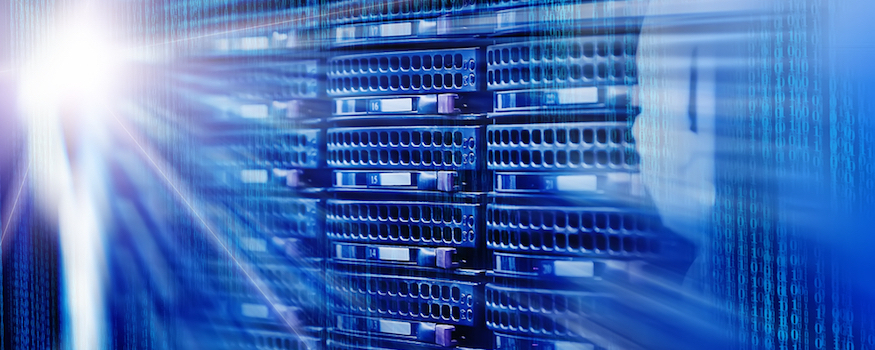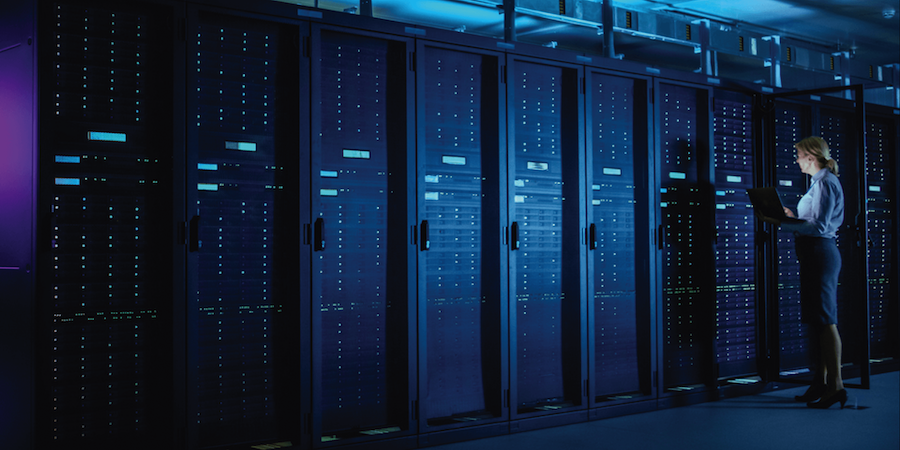In the past, servers and storage in an enterprise setting sat in a data center or cloud system. Workers accessed these remotely via a wired or wireless network. However, when the pandemic shut workers into their homes, it quickly became clear that having everyone in an organization hitting a remote server at the same time wouldn’t work.
Edge computing, which keeps processing power, storage and data close to or with an end user, alleviated many of these issues. As a result, the edge storage server grew quickly in popularity and shows no signs of stopping. For example, research firm IDC projected spending for edge computing to increase by 13.1% in 2023, hitting $208 billion by the end of the year and $317 billion by 2026. Furthermore, MarketPulse Research conducted for Insight1 polled IT managers and found that almost a third of all respondents say that the majority of their data resides on the edge. Even more significant is that 64% of respondents say that volume will continue to increase.
As it does, solid state drives (SSDs) will play a key role in the implementation and development of edge computing in several ways. Here’s how.
Benefits of SSDs to edge computing
When it comes to creating edge computing data centers, there are some technologies that make the process easier and more effective. High-capacity SSD drives fall into this category. Below are five major benefits of adding high-capacity SSDs to your edge storage server.
Get your complete guide to SSD management
Discover how to effectively adopt and manage SSDs in your organization with this ultimate guide. Download Now
- Applications run faster. SSDs have read/write speeds that are considerably faster than hard disk drives (HDDs). Persistent data in SSDs is stored on flash memory chips, which the controller can read and write almost instantaneously. The result is read/write speeds up to 35 times faster 2 than HDDs. Samsung PM9A3, which is designed for data centers, is a good example of this in the NVMe® U.2 form factor. It delivers up to 1 million IOPS of random read performance and features firmware that is optimized for heavy workloads. Samsung PM893 provides a 2.5” SATA interface, with sequential read/write speeds reaching up to 550 and 520 MB/s, and random read/write speeds at 98,000 IOPS/30,000 IOPS, respectively.
- SSDs are more durable and reliable. The same reason SSDs are faster than HDDs is also why they are more reliable and less likely to fail and lose data. With no moving parts, there’s less of a chance of failure. SSDs are resistant to drops and falls as well as overheating since they are architected to run in warm data centers. In addition, SSDs such as Samsung PM9A3 can help avoid data loss thanks to a power-loss protection architecture. The drive has stored energy in its tantalum capacitors that provide enough power to write cached data to the flash chips in the event of a power loss.
- You won’t have to replace them as often as hard disk drives. SSDs have longer lifespans than HDDs thanks to their form factor, as a 2022 study by Backblaze confirmed3. After four years, SSDs from a variety of manufacturers showed a failure rate of 1.05%, well below the 1.83% failure rate of hard drives over the period. More significantly, the study found a huge disparity in first-year failures between the technologies. None of the SSDs tracked in the study failed during the first year they were operational, compared to a .66% failure rate for HDDs.
- SSDs and interoperability go together. While HDDs come in several form factors and connection types, they can’t compare with the many SSD options. There is an SSD for every type of drive and all of the same form factors of an HDD, including tiny stick-shaped drives called M.2 SSDs that slide into PCIe® or SATA slots. Samsung PM893 works particularly well with legacy systems, thanks to its SATA interface, which means old and new systems can interoperate.
- SSDs are more secure. Most HDDs use software-based data encryption to protect data and applications from intrusion. The problem is these encryption methodologies are relatively easy for an expert to crack. SSDs feature hardware-based AES-XTS 256-bit encryption used by governments and militaries.
Edging to the cutting edge
Edge computing no longer represents a fringe technology but rather one that’s driving efficiency and performance at businesses and organizations everywhere. As such, they’ve become a key element in staying on the cutting edge of nearly any industry. SSDs will help get you there and sharpen that edge to a fine point.
Learn more about the range of internal and portable Samsung SSDs available and how they can bolster remote work security policies.
1 MarketPulse Research conducted for Insight. “The Path to Where Leaders Stand in 2023.” December 2022.
2 Enterprise Storage Forum. “Comparing SSD vs HDD Speed: Which Is Faster?” November 22, 2023.
3 Information Technology IT News. LinkedIn Pulse. “Portable SSD Market Size Insights 2023-2031.” November 20, 2023.








